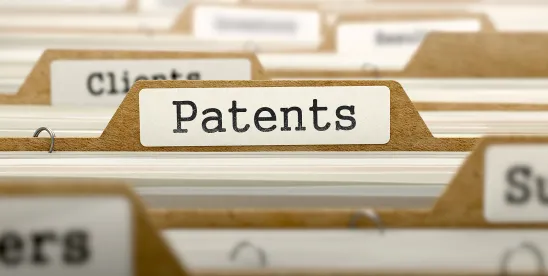The patent eligibility of claims involving the use of machine learning (ML) was recently considered by the US Court of Appeals for the Federal Circuit (CAFC) in Recentive Analytics, Inc. v. Fox Corp., Case No. 2023-2437 (Fed. Cir. Apr. 18, 2025). In its opinion, the CAFC affirmed the grant of Fox’s motion to dismiss on the ground that the four patents at issue — US Patent Nos. 10,911,811, 10,958,957, 11,386,367 and 11,537,960 — are ineligible under 35 U.S.C. § 101. The panel held that claims that merely recite the application of generic machine learning techniques to a new data environment without a technological improvement are patent ineligible under 35 U.S.C. § 101. Takeaways from the opinion include:
- ML claims are not made patent eligible under 35 U.S.C. § 101 simply because they perform human tasks with greater speed and efficiency.
- A general use of ML in new data environments does not integrate the judicial exception into a practical application under Prong Two of Step 2A of the United States Patent and Trademark Office’s (USPTO) subject matter eligibility analysis. See M.P.E.P. 2106.05(h).
- Iteratively training or dynamically adjusting an ML model is itself insufficient to show a technological improvement.
- If a patentee argues a technological improvement, the claims and specification should describe how the improvement was accomplished; in the case of ML, this may be the steps by which ML achieves the improvement.
This decision highlights the importance of patent drafting and strategic prosecution in creating robust patent claims that survive inevitable § 101 challenges in machine-learning applications. Although the Recentive ruling is not a drastic shift from patent-eligibility at the USPTO and in the courts, it provides an additional basis for examiners and judges to attack ML claims. Practitioners must be careful not to characterize and claim the ML aspects of an invention like the claims invalidated in the Recentive patents. The court stated that the Recentive claims “do not delineate steps through which the machine learning technology achieves an improvement.”
Indeed, the M.P.E.P. counsels applicants to describe an improvement in technology in the specification and requires that the claim itself must reflect the disclosed improvement. See M.P.E.P. §§ 2106.04(d)(1) and 2106.05(a). This ruling suggests that when discussing and claiming technical details in patent applications, it’s crucial to demonstrate a genuine technological improvement beyond the mere application of known techniques. Simply detailing the use of existing methods in a new context without showing how they advance the technology will likely be insufficient for patent eligibility. Recentive teaches that applicants should avoid characterizing an ML model as generic or suggesting any model is “suitable.” Instead, emphasis should be placed on the modifications to the ML model for operability in the invention.
Moreover, although training and adjusting an ML model is necessary for implementation, these activities alone will not provide the necessary technological improvement for patent eligibility.
Finally, applicants should keep in mind that the Recentive ruling does not address other routes to patent eligibility, such as improvements to the functioning of a computer, use with a particular machine or manufacture that is integral to claim, and other strategies described in M.P.E.P. § 2106.





 />i
/>i
